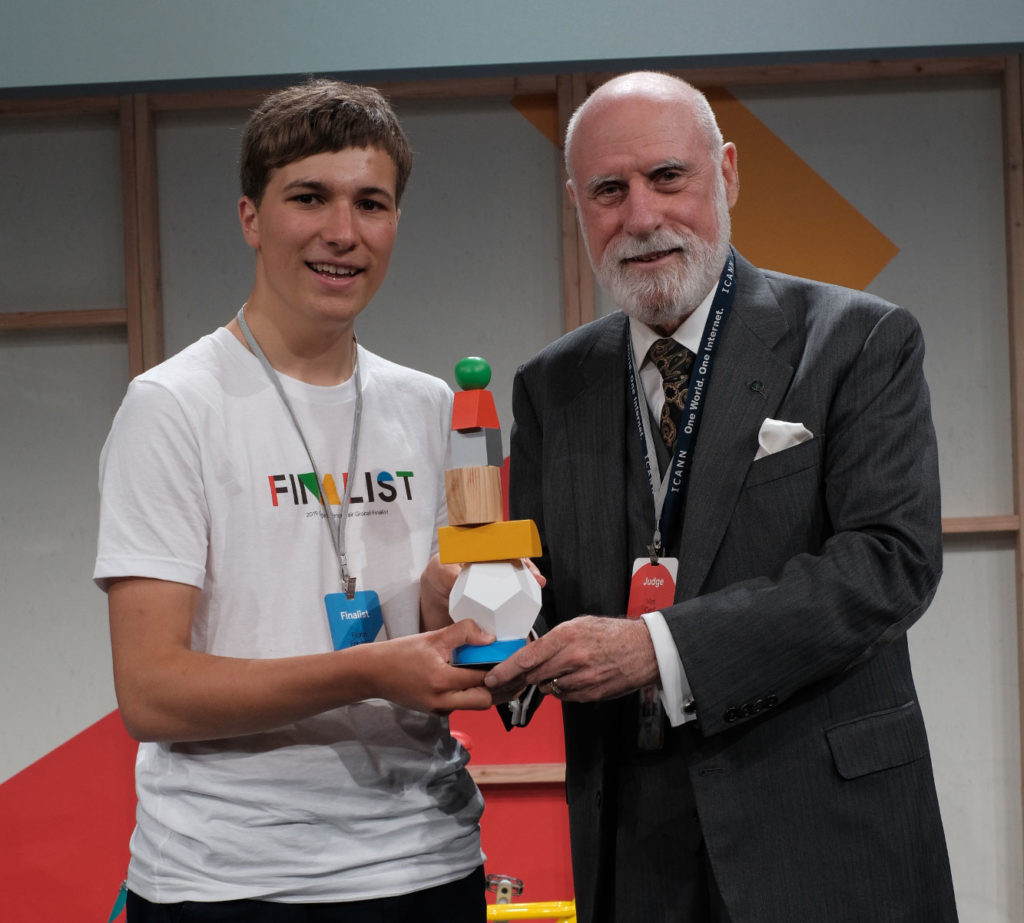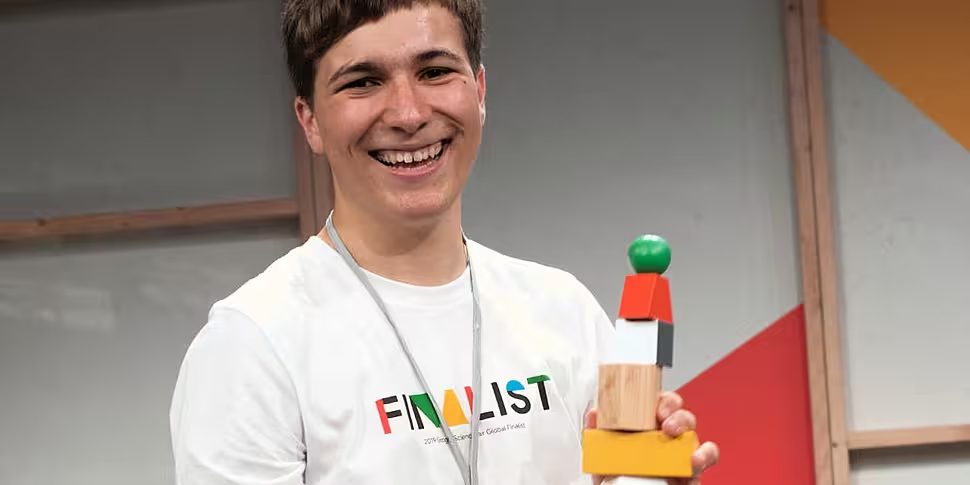An Irish student has won the 2019 Google Science Fair in the US.
The annual online science competition in California is open to students between the ages of 13 and 18 from around the world.
18-year-old Fionn Ferreira, from Ballydehob in Co Cork, looked at the removal of microplastics from water.
He was announced as overall global winner on Monday at Google international headquarters in California.
His project suggested a way to filter microplastics from water by using magnets.
 Fionn Ferreira (left) and Vint Cerf, vice president and chief internet evangelist at Google | Image: Google
Fionn Ferreira (left) and Vint Cerf, vice president and chief internet evangelist at Google | Image: GoogleFionn was one of 24 global finalists chosen from a shortlist of 100 regional entries that competed for the top prize of a US$50,000 (€44,868) grant.
He sat his Leaving Cert last month at Schull Community College and is due to attend university in The Netherlands.
Fionn also works as a curator at the Schull Planetarium and has won 12 science fair awards.
He also speaks three languages, and has even had a minor planet named after him by the MIT Lincoln Laboratory.
Mariette DiChristina, editor-in-chief of Scientific American and the chief judge for this year's competition, praised Fionn for his "tenacity and dedication to solving an important environmental problem embodies the spirit of exploration."
Fionn says he now wants to think big.
"My method was inspired by an article written by Arden Warner using non-toxic iron oxide (magnetite) to clean up oil-spills.
"I used this method in the extraction of microplastics by adding oil to a suspension containing a known concentration of microplastics, these then migrated into the oil phase.
"Magnetite powder was added. The resulting microplastic containing ferro-fluid was removed using strong magnets."
"The hypothesis was that this extraction method would remove 85% or higher of microplastics in samples."
"The method used was most effective on fibres obtained from a washing machine and least effective on polypropylene plastics.
"I conclude that my method would form the basis for an effective way of extracting microplastic from water.
"The next step is to scale this up to an industrial scale."









